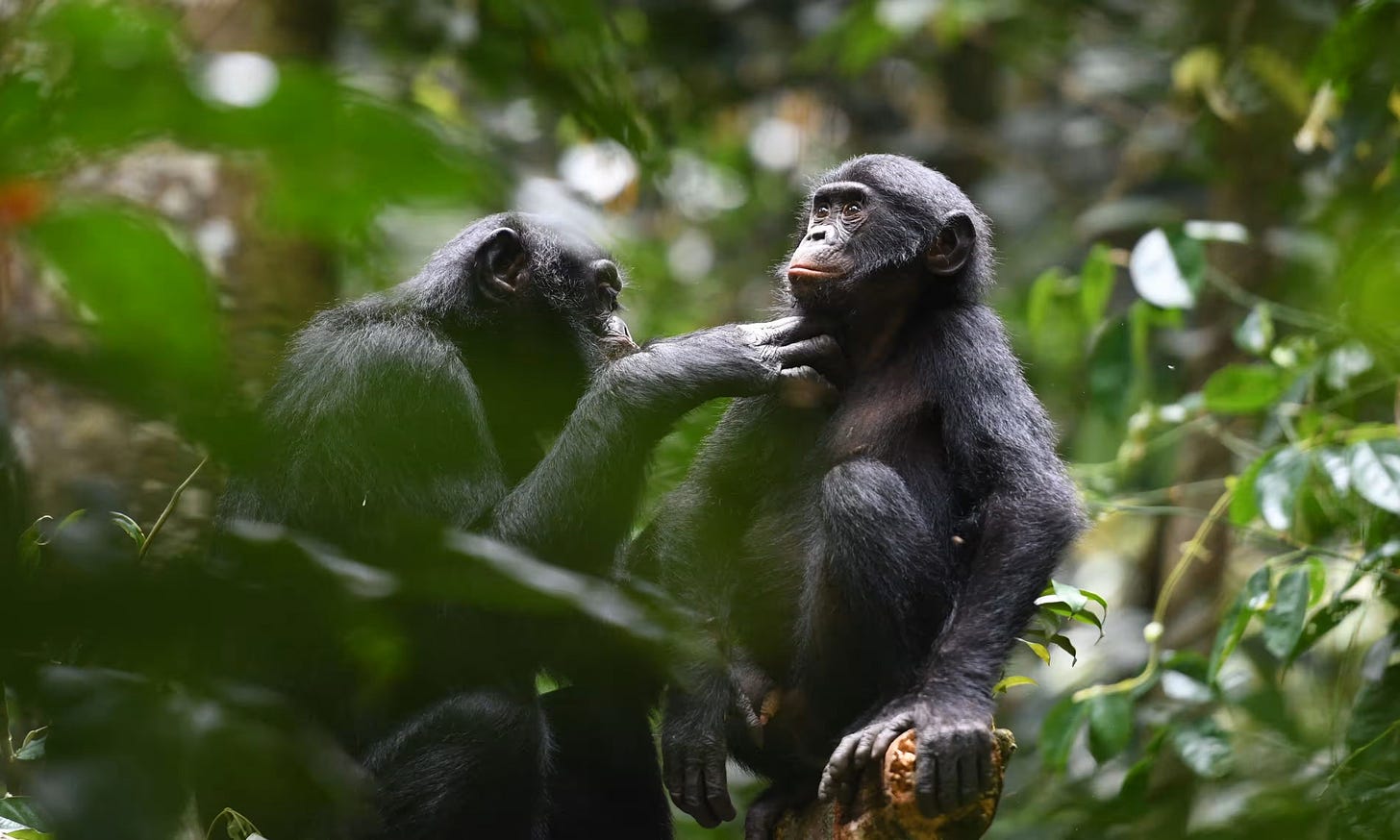When we think of bonobos and chimpanzees, our closest living relatives, images of gentle, playful bonobos often contrast sharply with the more aggressive, hierarchical chimpanzees. However, a recent study led by Maud Mouginot at the Institute for Advanced Study in Toulouse turns these assumptions on their head, revealing that bonobos might not be as peaceful as we once thought, especially when it comes to interactions between males.
Published in the April 2024 issue of Current Biology, the study meticulously documented and analyzed patterns of male aggression in wild populations of bonobos and chimpanzees. The research focused on three bonobo communities in the Kokolopori Bonobo Reserve in the Democratic Republic of Congo and two chimpanzee communities in Tanzania's Gombe National Park. What makes this study stand out is its depth and breadth, capturing over 14 years of community interactions based on the "focal follow" method, which is considered the gold standard for observing primate behavior.
High Stakes in the Wild
The findings are eye-opening: bonobos exhibited higher rates of male-male aggression compared to their chimpanzee counterparts, including more frequent contact aggression, where physical force is used. This contradicts the long-held view of bonobos as the more peaceful primate, suggesting that aggression plays a significant role in their social structure.
The researchers also noted differences in coalition behaviors—groups of males banding together. Chimpanzees formed more coalitions than bonobos, hinting that organized group aggression might be a strategic choice influenced by the need to control resources and maintain social order among chimpanzees.
The Role of Aggression in Reproductive Success
One of the most critical aspects of the study is its examination of the relationship between aggression and mating success. The results show that in both species, more aggressive males tended to have higher mating success. This indicates that despite the risks and potential for injury, aggression is a successful strategy for winning mates and influencing social hierarchies.
Moreover, the study revealed that bonobos have a higher rate of female-to-male aggression, likely due to the matriarchal nature of their societies, where females often hold higher ranks than males. This dynamic could influence male aggression levels and strategies in complex ways.
Challenging the Self-Domestication Hypothesis
The research also challenges the "self-domestication hypothesis," which suggests that species like bonobos have evolved to be less aggressive over time, akin to domesticated animals. While bonobos do show less lethal aggression and different social dynamics than chimpanzees, their higher rates of male-male aggression complicate the narrative of bonobos as the more "domesticated" primate.
Implications for Human Social Evolution
This study not only reshapes our understanding of bonobo and chimpanzee behavior but also provides valuable insights into the evolution of human aggression. By comparing our closest relatives, we can glean hints about the social structures and behaviors that may have been present in our own evolutionary past.
The differences in aggression, coalition-building, and social hierarchy observed in bonobos and chimpanzees suggest that multiple evolutionary paths can lead to success in different environmental and social contexts. This variability is something that humans likely share with our primate cousins, reflecting the complexity of social evolution.
Looking Ahead
The findings from Mouginot and her team open new avenues for research into the causes and consequences of aggression in social animals. Future studies will need to delve deeper into the environmental and genetic factors that drive differences in aggression and explore how these behaviors affect the long-term survival and fitness of primate populations.
As we continue to study these fascinating creatures, we not only uncover more about them but also about ourselves. Understanding the roots of aggression and cooperation in bonobos and chimpanzees brings us closer to comprehending the vast tapestry of human nature.
This study is a reminder of the power of scientific inquiry to overturn myths and challenge stereotypes, providing a clearer, more nuanced view of the natural world. As we look at bonobos and chimpanzees, it's clear that the line between peace and aggression is not as straightforward as once thought, offering profound lessons on the complexity of animal societies—including our own.
Mouginot, M., Wilson, M. L., Desai, N., & Surbeck, M. (2024). Differences in expression of male aggression between wild bonobos and chimpanzees. Current Biology: CB. https://doi.org/10.1016/j.cub.2024.02.071
© Photograph: Martin Surbeck/Kokolopori Bonobo Research Proje/AFP/Getty Images


